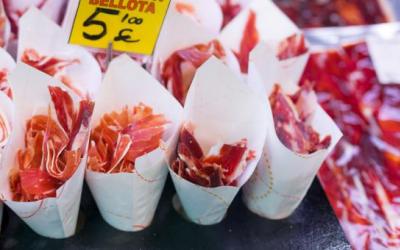New video on our channel: Secrets of Stallion Fatness: Where Does Tasty Meat Come From? How Is Fat Distributed in Horses?

What's tastier— MEAT from a stallion fresh from the pasture or from a fattening station? Why might a stallion, seemingly the largest, surprise you on the scale? it seems simple: the larger the stallion, the more meat. But is that really true? In this video, we'll join experienced horse breeders to weigh stallions and discuss horse meat.
This video shows the selection and evaluation of dairy stallions. Experts discuss the Mugalzhar, Novoaltaisk, and Kazakh stallions used to produce the crossbreds selected for slaughter. Scientists explain the specific body condition and conformation characteristics of the crossbred stallions. Pre-slaughter weight, carcass weight, and slaughter yield are discussed. It is emphasized that the animals came straight from the pasture without fattening and belong to the first category of body condition.
The conversation touches on horse coat color, comparing different first-generation crossbreeds. The distribution of fat deposits is explained, as are the signs that indicate an animal's HEALTH and development. It is explained that the stallions were kept fasted for a day and a half for the control slaughter.
Experts discuss which meat might be more delicious and how the quality of horse meat is determined. The question of marbled meat is being raised, and that marbling is largely achieved through stable housing and special feeding. It is suggested that after fattening, horse meat can be used to prepare not only traditional Kazakh dishes but also steaks, which are in demand worldwide.
At the end of the video, three stallions are weighed. The results confirm the experts' observations and show the animals' actual weight after being kept on pasture.
⚡️From this video you will learn:
✔️These horses are not for riding, but for meat and MILK
✔️Why these particular stallions were selected for slaughter and tasting
✔️What crossbreeds are represented: Mugalzhar, Novoaltayskaya and Kazakh
✔️How pre-slaughter weight, slaughter yield and fatness category are determined
✔️What features distinguish the first fatness category
✔️That the stallions came straight from the pasture without fattening
✔️Why the animals were kept hungry for a day and a half before slaughter
✔️Actual weighing results of the stallions - 350, 379.5 and 337 kg
✔️How genetics influence weight with the same mothers and different fathers
✔️How and under what conditions is it achieved Marbling of meat
✔️What skinning and deboning reveals—the percentage of meat and bone
✔️Why animals are given water before slaughter
✔️How horse meat is evaluated for taste and what crossbreeding methods are used on the farm
Read together with it:
- Низкое предложение и устойчивый спрос: в Аргентине растут цены на мясоЦены на говядину снова выросли, что отразилось на полках супермаркетов и в мясных магазинах. За последние две недели розничные цены выросли на 8–12%, а на некоторые популярные отрубы рост превысил 15% по сравнению с октябрем. Тем не менее, продажи остаются высокими: потребители продолжают покупать, принимая новые цены и закрепляя тенденцию, которая повторяется каждый год в конце года, когда спрос ...
- Смоленская область — лидер России по производству крольчатиныВ интервью «Агроэксперту» заместитель председателя регионального правительства Алексей Кучумов отметил, что регион достиг самодостаточности по таким продуктам, как яйца, мясо и картофель, превышая уровень 100%. Кроме того, Смоленская область занимает первое место по посевным площадям льна, а также активно развивает молочное животноводство, с общим поголовьем более 1......
- Stress in livestock: How housing conditions affect their health and productivityFor example, early separation of calves from their mothers causes a sharp surge in cortisol, which weakens the immune system and increases vulnerability to disease. The article also emphasizes that improper milking and housing practices can cause chronic stress and reduced productivity. Furthermore, the problem of lameness in cows is considered a consequence of living conditions, which can be impr...
- Wild boar meat: a sustainable solution for pest controlThis problem isn't unique to our region or country. As veterinarian and specialist Ignacio Zeledon explained, "Where there's water, there are pigs." And the truth is, its spread is noticeable worldwide and represents one of the world's most complex environmental and economic challenges. The wild boar (Sus scrofa) is an invasive alien species, listed among the 1......
- Производство мяса птицы в Новосибирской области увеличилось на 10%Это на 9,7% (или 5,4 тысячи тонн) больше, чем в аналогичном периоде 2024 года, как сообщает Новосибирскстат. Регион занимает второе место по объему производства мяса птицы в Сибирском федеральном округе, уступая лишь Алтайскому краю. Новосибирская область составляет почти 20% от общего производства в округе. Основным продуктом является замороженное мясо сельскохозяйственной птицы, составляющее 5.....
- Цены на мясо и колбасы снизились в Воронежской областиПолукопченая и варено-копченая колбасы подешевели на 4,68 рубля, теперь их средняя цена составляет 567,09 рубля за килограмм. Стоимость свинины сократилась на 3,14 рубля, достигнув 366,20 рубля за килограмм. Говядина также стала дешевле — на 41 копейку, теперь ее цена составляет 622,45 рубля за килограмм. Куриное мясо упало в цене на 2,27 рубля, сейчас его стоимость составляет 229,19 рубля за кило...




























































